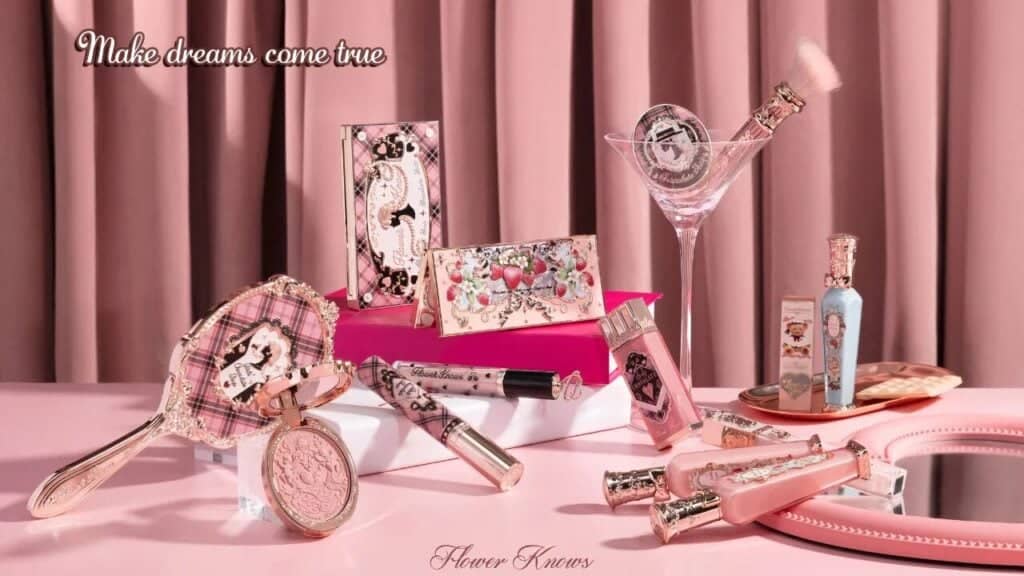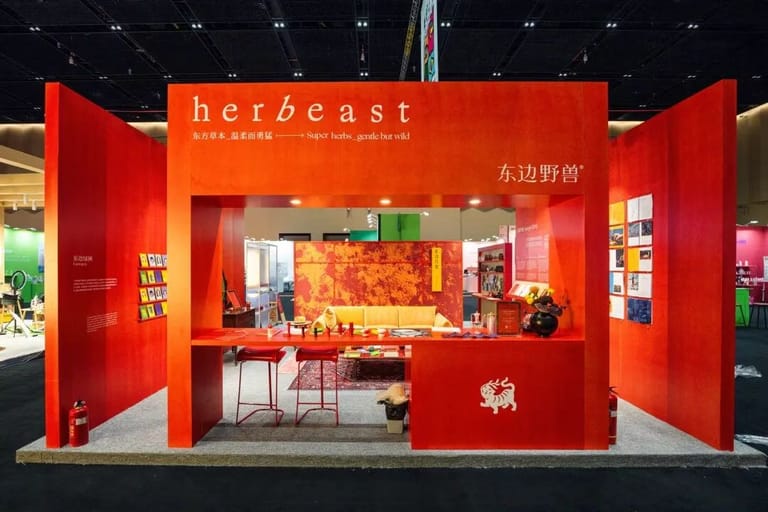C-Beauty Goes Global: Challenges and Strategies in Europe
By
Felicia Schwartz
Published on
June 13, 2025

Jingzhi Voice brings thought leaders, industry pioneers, and cultural influencers together to decode key trends, challenge conventions in China, and offer forward-thinking ideas that shape the future of jingzhi (精致) and beyond.C-Beauty Goes Global
In recent years, Chinese beauty brands have experienced remarkable success in their domestic market, with players like Florasis, Perfect Diary, and Winona establishing themselves as formidable competitors to international giants. Following this domestic triumph, these brands have begun setting their sights on global expansion, with Europe representing both a lucrative opportunity and a complex challenge. This push overseas is a natural progression in China’s economic development—but also a response to slowing growth and increasing competition at home.
Navigating Barriers: Regulation, Competition, and Trust
Europe presents a markedly different landscape for Chinese beauty brands compared to their home market. The continent’s beauty industry is mature and crowded with established global and local players, creating a highly competitive environment. As newcomers, Chinese brands must adapt to these conditions while clearly differentiating themselves.
Despite improvements in global perceptions of Chinese brands, many European consumers still harbor skepticism around product quality. Building trust is therefore a critical challenge for C-beauty brands entering the region. Winona has responded by positioning itself as a specialist in sensitive skincare, emphasizing medical credibility through doctor endorsements and scientific research. The company highlights its presence in over 100 academic journals and partnerships with more than 3,000 dermatology departments in Chinese hospitals—an evidence-based approach that resonates in markets where clinical credibility matters.
Like other sectors, beauty brands face complex regulatory hurdles in Europe, particularly around product safety, ingredient disclosure, testing requirements, and marketing claims. For brands accustomed to China’s regulatory framework, navigating Europe’s stringent requirements poses a significant challenge.
Chinese brands must ensure compliance with approved ingredient lists and avoid prohibited substances, while also adapting ingredient nomenclature to EU standards. This often entails reformulating products specifically for the European market—adding both complexity and cost to expansion efforts.
From Product Fit to Cultural Relevance /C-Beauty Goes Global
Beyond structural differences, international success hinges on understanding regional consumer preferences—even within Europe. As demonstrated in Southeast Asia, market diversity—from ethnic backgrounds to levels of maturity—also characterizes the European landscape.
Perfect Diary has shown agility in adapting to such variations across Asia, releasing more inclusive foundation shades and launching oil-control products tailored to local needs. A similar approach is necessary in Europe, where skin tones, climate-related concerns, and aesthetic preferences differ widely—such as between consumers in Ireland and Spain.
C-beauty brands also face a strategic decision: how prominently to highlight their Chinese origins. While “brand China” remains a polarizing concept in some markets, certain players have successfully leveraged cultural heritage as a key differentiator.
Florasis, for example, has built a global presence—selling via e-commerce in over 100 countries and operating standalone shops in 46—by rooting its brand in “traditional cosmetics” and Chinese floral essence culture. It has also tapped into Gen Z consumers’ appetite for novelty through cross-cultural collaborations, including a partnership with the British Museum for an eyeshadow palette.
Unlike many Chinese brands competing on price, Florasis has entered the premium segment, with lipsticks priced around $50 and eyeshadow palettes at $60—directly rivaling luxury Western labels. This strategy has delivered results: one Florasis lipstick, priced higher than a Chanel equivalent, ranked among the top three hourly lipstick sales on Amazon Japan during its launch.

In contrast, Winona has carved out a niche by competing with international pharmaceutical skincare brands such as La Roche-Posay, Bioderma, and Vichy. Its focus on sensitive skin is a targeted approach, offering an easier path to differentiation in a crowded market where consumers are increasingly drawn to specialized solutions and clinical backing.
Other brands play to different strengths. Chando champions natural ingredients and sustainability—an appeal for environmentally conscious European consumers—while Judydoll targets younger audiences with affordable, playful products. With 171 eyeshadow shades and reportedly over 700,000 units sold monthly, Judydoll exemplifies how mass-market positioning can succeed through product variety and trend responsiveness.
Digital Realities: Adapting Marketing and Distribution
Chinese beauty brands have excelled at using social media and influencer marketing domestically. Perfect Diary has engaged celebrity ambassadors, while Florasis has built awareness through partnerships with streaming personalities.
However, these strategies require careful adaptation for European audiences, where influencer culture and digital habits differ markedly. China’s integrated e-commerce and social media ecosystem—anchored by platforms like Douyin and Tmall—has no direct equivalent in Europe.
Instead, brands like Flower Knows have broken into Western markets through retail partnerships, such as with Urban Outfitters in the US. Similar collaborations with trusted European retailers could help C-beauty brands build physical presence and credibility.

Building for the Long Term: Innovation, Price, and Positioning
Leading Chinese beauty brands increasingly prioritize R&D to compete globally. As one industry expert put it: “If you don’t step up on R&D, product, ingredients, you cannot do well… Today’s consumer is country-blind. It doesn’t matter if it’s Japanese, Korean, European—they just want a product that does the job.”
To that end, many brands are partnering with global ingredient suppliers like Lubrizol and Hallstar. Proya, a major Chinese player on track to exceed $1 billion in revenue, has established an innovation centre in France—the first Chinese beauty brand to do so—demonstrating commitment to aligning with European standards and preferences.
Price positioning also plays a crucial role. Chinese beauty brands are finding a strategic middle ground between mass market and luxury pricing—offering high-quality products at mid-range prices that European consumers perceive as value-driven.
Florasis stands out by intentionally positioning itself in the premium category. Rather than competing on price, the brand has cultivated prestige through intricate packaging, traditional Chinese design elements, and cultural storytelling that justifies elevated pricing.
Most successful Chinese beauty brands abroad begin with e-commerce distribution before expanding into physical retail. This digital-first approach allows brands to test demand and collect data while limiting upfront investment.
Perfect Diary and Florasis have both focused on growing their international e-commerce footprint, using platforms like Amazon as well as direct-to-consumer websites to reach European customers—offering flexibility and scalability as they enter new markets.
Conclusion
Chinese beauty brands must continue to refine their strategies to thrive in Europe. This means adapting to local consumer behaviour, meeting rigorous regulatory standards, and navigating complex competitive environments—while drawing on their strengths in innovation, cultural storytelling, and digital fluency.
The contrasting strategies of Florasis (leveraging cultural heritage and premium positioning) and Winona (focusing on medical efficacy and niche skincare) underscore that there is no one-size-fits-all path. Each brand must develop its own positioning based on unique strengths and target demographics.
As the global beauty landscape evolves, Chinese brands have a real opportunity to become significant players in Europe. But success will require patience, cultural sensitivity, regulatory rigour, and a willingness to localize both product and messaging to meet the nuanced demands of the European consumer.
This is an opinion piece by Felicia Schwartz, Founder and Director of China Insight, a London and Shanghai based strategic insight agency bridging East and West. The views expressed do not reflect the official stance of Jingzhi Chronicle.
Stay Connected Through Our Weekly Newsletter













